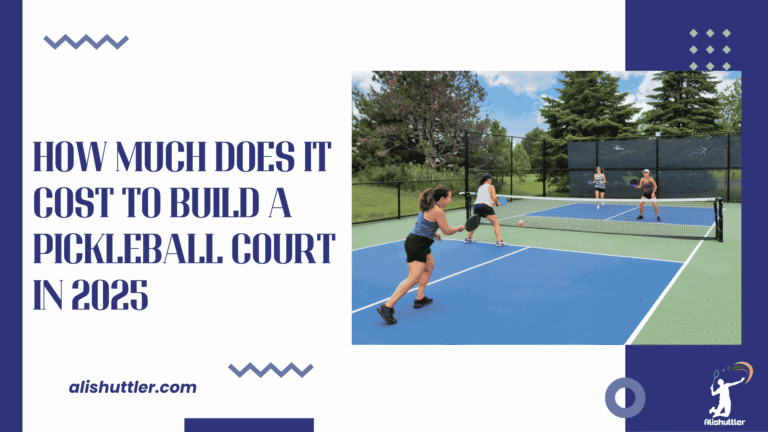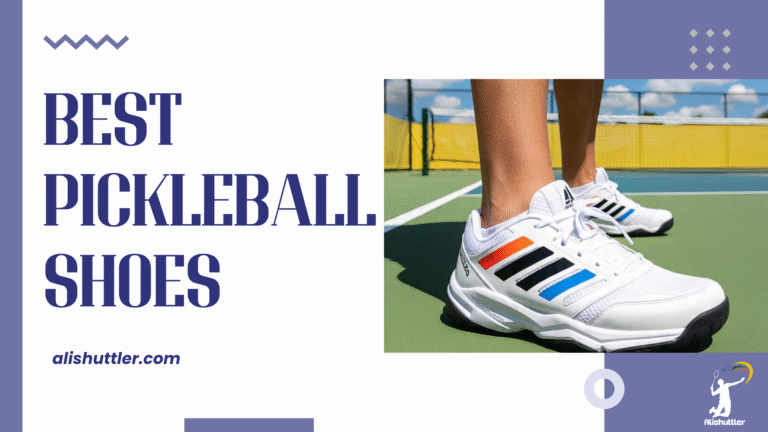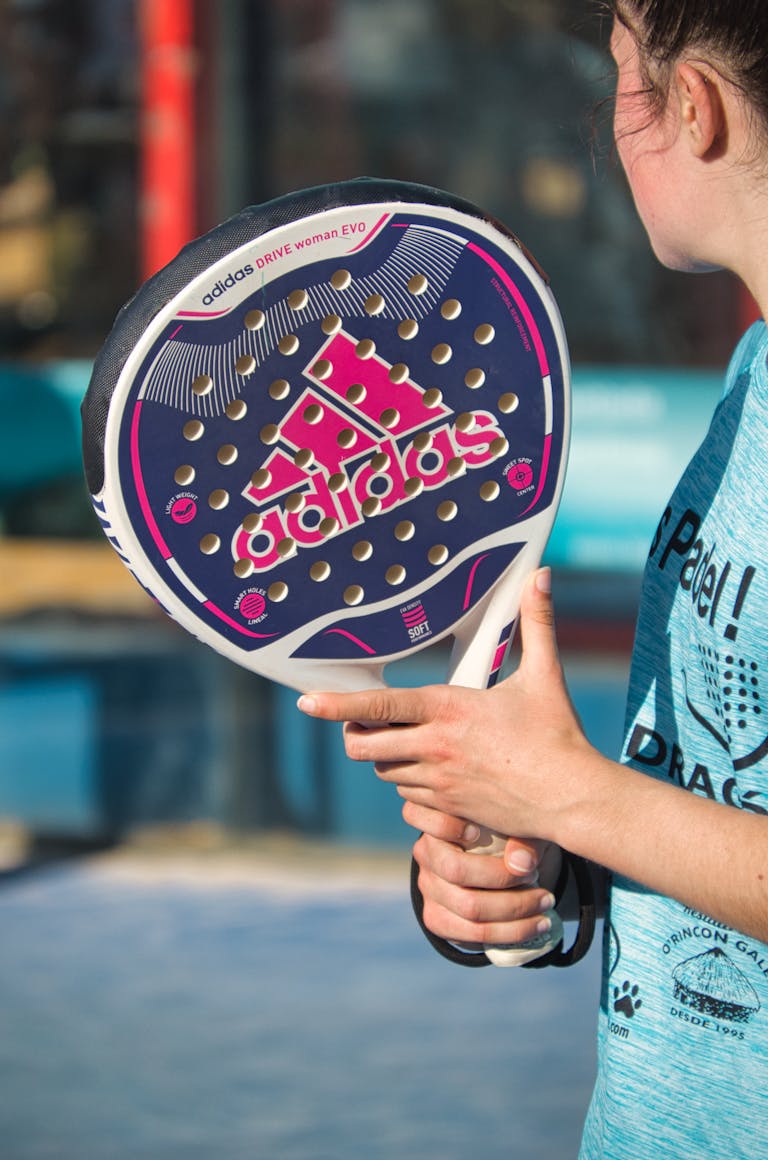Pickleball bags are designed to store paddles, balls, and equipment for convenient transport and storage. Most bags utilize lightweight fabrics, padded compartments, and additional space for shoes or water bottles.
Some have crossbody straps, while others utilize backpacks for comfort. From small sling bags to large duffels, each bag is suitable for various play styles.

To assist in finding the perfect fit, the core of this article dissects important features and choices.
Bag Types
Pickleball bags are created for all levels of necessity, ranging from the weekend warrior to the die-hard competitor. The primary categories are sling bags, backpacks, duffel bags, tote bags, and tour bags. Each type has its own attributes, advantages and disadvantages, so the best varies depending on how much equipment you lug around and your frequency of play.
A few bags employ hardy, weather-resistant fabrics such as nylon or polyester to ensure daily durability, while others prioritize lighter weight materials or aesthetic. Pairing a bag with your style of play can simplify your court commute and keep your equipment in order through every set.
1. Sling Bags
Sling bags are made for quickness and ease. Their petite, one-strap structure implies that you can toss one over your shoulder and be on your way. A lot of players love them for rush trips to the court or when all they really need is a paddle, a handful of balls and perhaps a water bottle.
Sling bags unzip at the top or side, so you can access the interior without removing the bag. They’re light and easy to carry, so it’s a great choice for newbies or anyone who doesn’t pack a lot of gear. That tininess does become an issue for the serious player. You can’t cram shoes, towel or backup paddles in most sling bags, so they’re best for featherweights or as a backup.
2. Backpacks
What makes backpacks great is their spacious main compartment and tons of additional pockets. You can stuff a few paddles, clothes, water bottles and snacks in there. Padded, adjustable shoulder straps help distribute the load, so it’s easier on your back if you stroll or take public transit.
Several feature dedicated ball or laptop slots, letting you rock them off the court as well. Most backpacks utilize nylon or polyester to remain light but durable. The numerous compartments keep things organized, so you spend less time rummaging around for what you need.
A backpack is cool if you want a single bag for all-day use, not just pickleball.
3. Duffel Bags
Duffel bags have always been synonymous with oversized, unstructured storage. You have more than enough space for shoes, towels, extra clothes, and multiple paddles. The broad opening allows for quick loading and unloading.
Zippered pockets on the sides or ends of the bag keep smaller elements separate. Duffel bags typically employ a ‘chunky’ weather resistant material, making them last if you ball frequently or at varying locations. There are many styles: from plain gym bags to bright, custom ones with logos or team colors.
Duffels suit players who hit the road for tournaments, pack surplus or require versatility.
4. Tote Bags
Tote bags add some style to the court and perform great for light practice or pickup games. They’re great for their no-fuss, open construction—dump what you need and run. Totes are generally constructed of easy clean fabrics, such as canvas or polyester, and are lightweight.
There’s not a lot of built-in organization, so smaller items can get lost at the bottom. A tote doubles as a shoe or clothes bag, or for players who pack light, want something stylish to match when they’re off the court, too.
5. Tour Bags
Tour bags are designed for serious, competitive players. They’ve got reinforced sides, thick padding and strong zippers. Several pockets secure 4+ paddles, shoes, balls, water bottles and your belongings.
The materials are high quality—frequently heavy-duty polyester or nylon with weather guards—so they stand up to everyday wear and travel. The appearance is stylish and businesslike, with numerous manufacturers including labels or bright hues.
For tournament players or those who simply have a lot of gear to transport, a tour bag addresses all the necessities.
Sizing Guide
Choosing the appropriate pickleball bag size is crucial as it defines how you transport your pickleball gear and navigate your day. The right bag size can transform your routine, enhance your comfort, and complement your playing style. Each bag is available in three main sizes—small, medium, and large each catering to different needs, especially for advanced pickleball players.
The Minimalist
The minimalist pickleball bag is perfect for players who travel light and need to carry their pickleball paddles efficiently. These bags come in small, ultra-compact designs, such as sling bags or mini-backpacks, which are easy to carry and fit into tight spaces. They are ideal for a subway or bike ride to the court, allowing you to grab and go with lightweight pickleball equipment that accelerates your routine.
This layout is designed for quick rounds or pick-up games, where only the essentials matter. A minimal bag typically contains a single paddle, a water bottle, and a can of balls, with some featuring a mini pocket for keys or a wallet. By keeping the design sleek and minimal, players can focus on their game without being distracted by excess gear.
For those looking to streamline their pickleball journey, a good pickleball bag is vital. It allows you to stay efficient and prepared, ensuring that you have everything you need for your next match while maintaining a lightweight and functional design.
The Regular
Medium-sized pickleball bags are just right for most players, especially those who need to carry their pickleball paddles and other essential gear. They’re large enough for a day on the court or a weekend tournament, yet not so large that they become cumbersome. These bags strike a balance between housing what you require and remaining effortless to carry around—transportable, but still spacious enough for your pickleball journey.
Inside, you’ll often find individual slots for 2 or 3 paddles, a change of clothes, and footwear. Most bags include a dedicated paddle sleeve and mesh water bottle pockets, along with zippered pouches for smaller accessories. This organization ensures that your pickleball equipment remains tidy, so nothing falls through the cracks.
Medium bags are the go-to for players who log multiple hours on the court or shuffle between matches. They provide ample space for all your pickleball essentials while maintaining a compact design.
They’re the right size—more than a carry-on but less than a weekender. For many, that’s the magic zone—spacious, tidy, and efficient for everyday pickleball needs.
The Competitor
Duffle bags and other large pickleball bags accommodate the requirements of hardcore competitors. These bags have larger dimensions, typically around 24 cm x 6 cm x 34 cm and often feature additional bags for shoes or wet clothes. They’re constructed for those multi-paddle players schlepping back-up gear, towels, snacks, and beyond.
With bonus room comes bonus pockets–gear compartments, side bottle holders, even breathable pockets for stinky clothes. This degree of organization accelerates game-to-game transitions and allows pickleball players to store gear clean and dry, separated.
Anyone who endures full days at tournaments or tours with a team frequently requires this ability. A competitor’s bag can help enhance preparedness and performance by ensuring that everything is accessible.
It comes packed with all you need for long days on the court, from lunch to recovery. For most, it’s about peace of mind—knowing that every need is wrapped up in a good pickleball bag.
2025 Top Picks
Pickleball bags come and go, but the best of 2025 emphasize smart use of space, robust construction and convenient transportation. Today’s players need bags that keep up with their pace—be it to a match, practice, or even flying overseas for tournaments.
These year’s six top picks cover those needs with a variety of designs and price points. They both caught my attention. The first standout was the ProLite Tour XL. This bag is for the globetrotting player. It stores both paddles, a change of clothes, shoes, balls and even a 15 inch laptop.
Its vented shoe pocket keeps gear fresh, and the sturdy fence hook allows you to hang it up by the court. It’s crafted from rugged, water-resistant material and is available in black and navy. Price is on the higher side, but lots say the quality and room justify it.
Next up, the Selkirk Core Day Bag is a slim pick for those who like to travel light. It accommodates two paddles, a handful of balls, and even has a thin tech pocket. Though it’s devoid of any additional bells and whistles, its minimalistic appearance and sub-$40 price point has made it popular among casual players.
The mesh side pocket accommodates a large water bottle, and it’s available in five colors. What sets the Franklin Sports Sling Bag apart is its versatility. It has a reversible shoulder strap, so you can wear it on either side.
The internal pocket houses paddles and balls, while the outer zip is clear—great for phones or keys. It’s cheap, priced near $35, and reviewers appreciate the comfort and quick-access pockets. For those who need more, the Onix Pro Team Backpack is PACKED with pockets – including elasticated mesh on the sides for a 40 oz water bottle.
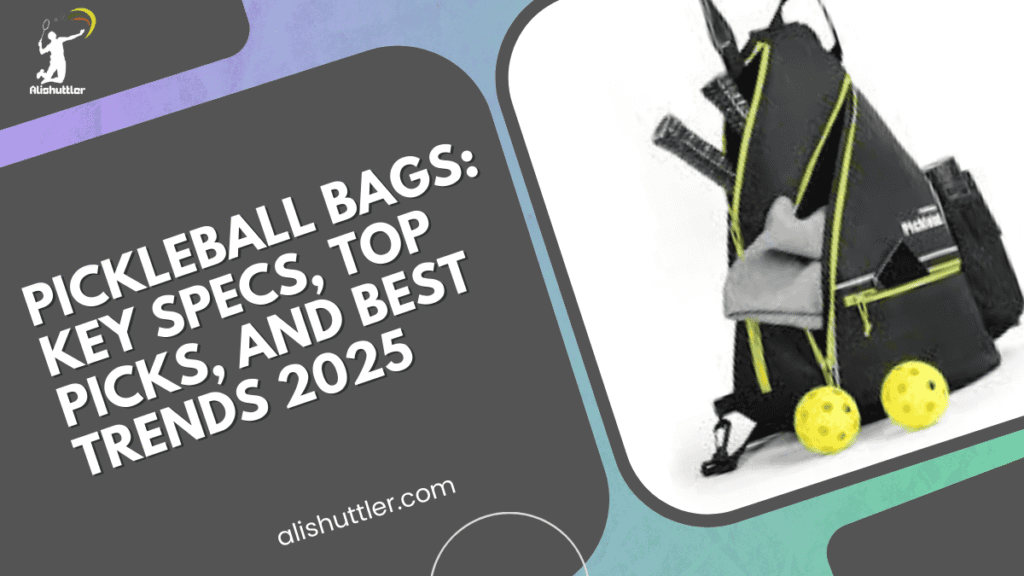
It’s large enough for extended tournaments or clinics, and its cushioned straps are a breeze on your shoulders. The base is reinforced to withstand wear. Another solid choice is the Vulcan VPRO Pickleball Backpack. It’s pricier, but has a fence hook, plenty of interior organization and breathable mesh to keep equipment cool.
It’s a hit with players who travel with a small army of add-ons and appreciate tough zippers and fabric. Our Pickleball Central Duffel really shines for players who want an all-in-one travel bag. It features a spacious main compartment, a shoe tunnel, and adjustable straps.
It’s the top price here at $149.99, but numerous international purchasers rave about its roominess and comfort on the road. A quick look at features, price, and customer feedback:
| Bag | Storage | Price (€) | Customer Rating | Notable Features |
|---|---|---|---|---|
| ProLite Tour XL | Large | 138 | 4.8/5 | Ventilated, laptop pocket |
| Selkirk Core Day Bag | Small | 36 | 4.5/5 | Budget, 5 colors |
| Franklin Sports Sling Bag | Medium | 32 | 4.3/5 | Reversible, transparent zip |
| Onix Pro Team Backpack | Large | 89 | 4.6/5 | Mesh side pockets |
| Vulcan VPRO Backpack | Medium-Large | 99 | 4.7/5 | Fence hook, breathable mesh |
| Pickleball Central Duffel | Extra Large | 149 | 4.8/5 | Shoe tunnel, travel-ready |
Customer ratings this year highlight storage, easy access and comfort. Many opt for bags with heavy-duty zippers, padded shoulder straps and tech pockets. Touring players love the ProLite Tour XL and Pickleball Central Duffel and casual users prefer the Selkirk and Franklin Sling.
Key Features
Selecting a pickleball bag is about more than style. Every one of these features has an impact on bag functionality, durability, and comfort. Selecting the perfect combination of amenities keeps you on top of your game, whether you’re a frequent or casual gamer.
The right features keep gear safe, dry, and organized. Durable bags last longer, saving money over time. Comfort features count if you walk or commute with your bag. Bag size and compartments should match your playing needs. Weather-resistant materials protect your gear outdoors. Reliable zippers and strong stitching prevent wear and tear. UV resistance maintains bags that look new, even with sun exposure. Extra pockets allow you quick access to paddles, balls and the necessities.
Material
Premium pickleball bags often feature rugged materials like Kodra nylon, which withstands frequent use and the elements on the pickleball court. This durability is essential for players on-the-go, especially those who are serious about their pickleball journey. Many bags also include water-resistant coatings, ensuring that your pickleball equipment stays dry during unexpected downpours.
The choice of material significantly affects the weight of the bag. Lightweight fabrics make carrying easier, while heavier options may last longer but can weigh you down, particularly as you pack multiple pickleball paddles and gear. UV-resistant fabrics also prevent fading, making them essential for any pickleball player competing in sunny conditions.
Compartments
Several bags provide compartments that range from large main sections for shoes and clothes to smaller pockets for balls, phones, and keys. Dedicated paddle pockets, occasionally insulated, guard your paddles from dings or heat. Several compartments keep you organized, so you can reach in and grab what you need without rummaging.
Players with a lot of gear extra paddles, shoes, water bottles—can appreciate larger bags with more pockets. For the bare essentials, a small bag with a few key compartments does the trick. The right design equals less digging, more gaming.
Comfort
Comfort counts, particularly if you hoof it to courts or on the road for games with your pickleball gear. Padded straps and handles go a long way for your shoulders and hands, while a good pickleball bag often utilizes ergonomic designs that distribute weight. It’s these key features that add up to a superior experience, especially on those long days spent playing pickleball.
Durability
The construction of a good pickleball bag significantly impacts its durability. Features like double-stitched stress points, tough seams, and reliable zippers—such as YKK—allow these bags to endure the everyday grind. Additionally, water-resistant finishes and rugged cloth protect the bag from rain, sun, and abrasion, making it a great option for pickleball players who need to safeguard their equipment during their pickleball journey.
Beyond The Bag
Pickleball gear is more than just the bag. What you bring, how you pack it and the attention to detail all factor into your on court time. For a lot of players, ‘beyond the bag’ means prepared for anything—extra shirt, water, towels or even a quick rainy day playbook.
Some concentrate on mental preparation, such as warm-ups or tactical discussions before matches. Still, for the majority, it’s about staying organized and ahead so that nothing gets left behind.
Organization
- Organize paddles and balls in individual pockets for quick access.
- These little pouches make sweatbands, tape, and snacks easy to find.
- Keep water bottles standing in side holders to prevent spills.
- Stuff towels and additional shirts into mesh compartments for ventilation.
- Resort to transparent pouches for smaller essentials such as keys or loose change.
Loose items drag you. Small pouches or zip bags keep everything in place, so you won’t rummage around in the main pocket during a match. An elegant system reduces the stress of minute scrambles.
When everything has a designated place, you’re less inclined to leave behind things such as sunscreen or spare grip tape. A well-organized bag means you hit the court and start warm-ups sooner.
No more wasted time digging through gear so you can stretch, plan moves or get in the zone. Proper setup makes you feel cool and in the zone.
Maintenance
- Wipe the bag outside with a damp cloth after each use.
- Vacuum inside pockets and compartments or shake out dirt or crumbs at least once a week.
- Air the bag open after games to prevent odors and mildew.
- Keep the bag in a cool, dry place away from sun.
A quick clean after each game keeps the bag looking fresh. For larger messes, use mild soap and water, but be sure to allow it to dry completely before packing up again.
Dry inside = no mold, and your gear stays fresh longer. When not in use, store your bag off the ground and away from sharp objects. This prevents tears or abrasion.
Checking for broken zippers or seams on a regular basis ensures you repair minor problems before they evolve into major damage. With consistent love, the majority of bags endure over a few years—helping you save cash and bother in the long haul.
Customization
Personal touches make your bag pop. Many players accessorize with club patches, tournament pins or boldly tagged names. Others use colored zipper pulls or neon straps for quick identification.
A bag that reflects your style can enhance pride and enjoyment of the game. For teams, matching tags or emblems create camaraderie. Customization simplifies identifying your equipment at crowded courts, reducing confusion.
Stating your bag is YOUR statement of staying in the game. It transforms a standard issue item into something personal, functional, and enjoyable.
Future Trends
As pickleball’s rapid global expansion continues, players are increasingly seeking top pickleball bags that cater to their evolving needs. Whether a beginner or pro, they desire functional bags that are smarter and more useful, ensuring their pickleball equipment is organized and ready for the next pickleball tournament.
Emerging Trends in the Pickleball Bag Industry
Brands are designing bags that suit how we play today. Bags are becoming more and more pocketed for things such as paddles, shoes and water bottles. Certain varieties even boast dedicated nooks for chips, phone chargers or keys, so gamers don’t have to excavate.
Athletes and travelers alike are requesting bags that do more than just lug gear around—they’re wanting bags that help keep things organized and protected. A ton of bags now have super padded, reinforced areas for paddles so they don’t get bent. Others even include cooling drink pockets or vented shoe slots.
As the sport grows, bags are strutting new styles as well. Folks want bags that match their style or team so brands are selling more colors, patterns and even custom choices.
Innovations in Design and Functionality
Design moves quickly, especially in the world of pickleball bags. Certain bags utilize lighter, tougher materials, ensuring they endure longer without adding weight. For instance, heavy-duty nylon and polyester blends are standard, but elite bags may incorporate carbon fiber panels for additional rigidity without extra mass. Many of these bags cater to pickleball players by providing ample space for essentials like pickleball paddles and accessories.
Bags often feature broad straps or cushy back pads for comfort. Makers are including practical features such as built-in hooks to hang your bag on the court fence and mini cases for sunglasses and grips. Customizable dividers are also becoming popular, allowing players to modify the interior space for various pickleball equipment.
For globetrotting players, foldable bags that pack flat are gaining traction, making them a great option for those who need a functional bag for travel. These innovations are helping players of all levels, from beginners to pros, find the perfect bag for their pickleball journey.
Eco-Friendly Materials in Bag Production
More players desire bags that assist the planet. Brands are opting for recycled polyester or hemp. Certain bags employ dyes and finishes that are gentler to the environment.
Brands will undoubtedly continue to shift in this direction, as consumers are increasingly proving that they care about both quality and the earth. Earth-friendly bags like rPET (recycled plastic bottles) are emerging everywhere. A few brands even operate take-back programs, so vintage bags don’t wind up in a landfill.
Technology Integration in Pickleball Bags
Smart tech is beginning to appear in bags. Some new bags even have USB ports to charge your phone, or tiny little GPS trackers for when the bag inevitably gets lost.
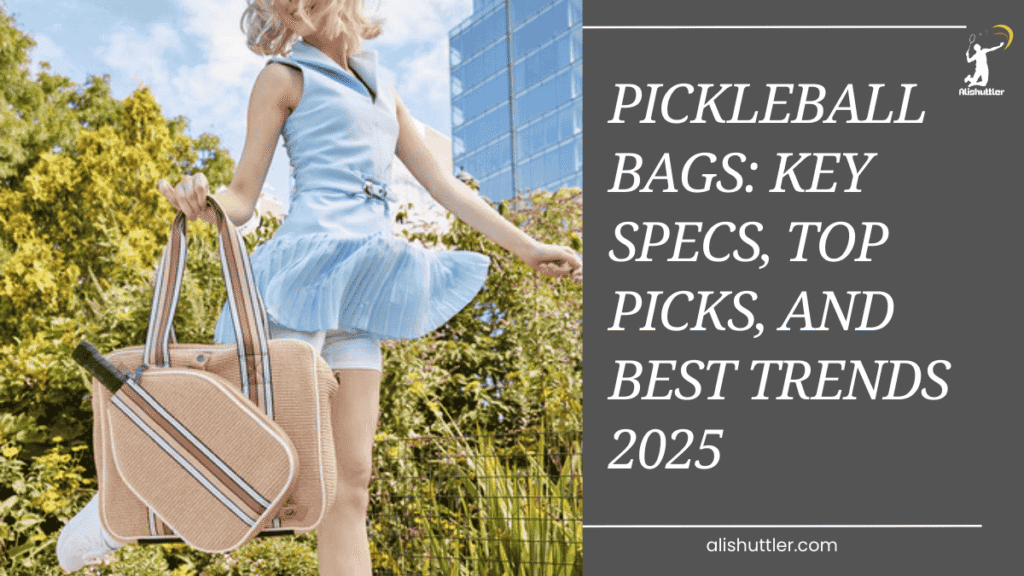
It’s not uncommon to find backpacks featuring integrated lamps so gamers can locate items in the dark. With an increasing amount of equipment employing apps to monitor play or check stats, bags could soon feature dedicated compartments for gadgets.
Others makers are even exploring how to integrate solar panels for charging small devices on the court.
Final Thoughts on Pickleball Bags
Pickleball bags do a lot more than just carry gear now. With varying styles, sizes and smart add-ons, there’s something for everyone to match their needs. Some people need a mini sling for a quick match. Others opt for big duffels to accommodate shoes, paddles, and snacks. Zippers, pockets and hardcore fabrics make bags ready for the daily grind. Things on the trendometer are not standing still.
We envision sleek silhouettes and innovative cooling and drying solutions. Shoppers desire to be prepared and stylish on the court. Test drive a bag that suits your swing and expresses your flair. Explore a few top-notch bags, find your fit, and bring your A-game to the next match.
Frequently Asked Questions
What types of pickleball bags are available?
Pickleball bags, including functional backpacks and duffel bags, come with varying storage options, such as a dedicated paddle sleeve, allowing you to choose one that suits your personality and pickleball journey.
How do I choose the right size pickleball bag?
Choose a good pickleball bag depending on how many Pickleball Bags, and personal items you tote around. I’ve found for most players, a medium-sized bag (around 30-40 liters) carries all the pickleball essentials without being overly cumbersome.
What are the key features to look for in a pickleball bag?
Search for top pickleball bags featuring padded paddle pockets, ventilated shoe compartments, and water-resistant fabric. Additional accessory pockets for keys, water bottles, and valuables provide ease and security.
Are pickleball bags suitable for international travel?
Sure, a lot of the pickleball bags out there are designed for travel. Opt for a good pickleball bag with tough zippers, comfy straps, and a compact size that complies with airline carry-on regulations to save you $50 while keeping your pickleball gear safe.
Which pickleball bag brands are recommended for 2025?
Best pickleball bags for 2025 include top brands like Selkirk, Franklin, and Onix, known for their durability and smart storage, making them a great option for both casual and competitive pickleball players.
Can a regular sports bag be used for pickleball?
You can get away with a standard sports bag, but a good pickleball bag offers paddle protection and organization. These top pickleball bags include features tailored to the specific demands of pickleball players.
What future trends are shaping pickleball bags?
Here are some trends to look for in the future: eco-friendly materials, smart compartments, and features like dedicated paddle sleeves and tech integration such as USB charging ports. These innovations aim to create a good pickleball bag that is sustainable and convenient for players around the globe.


